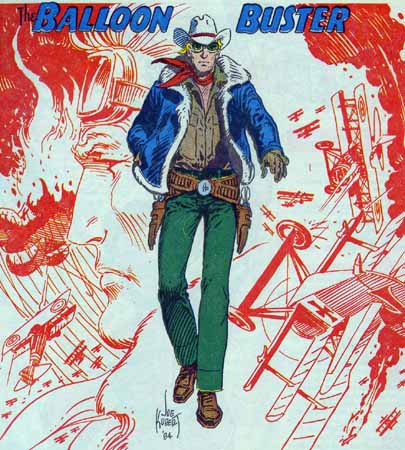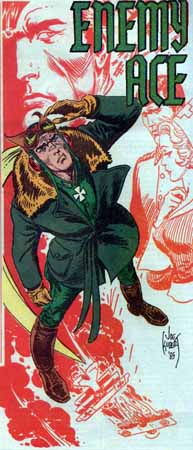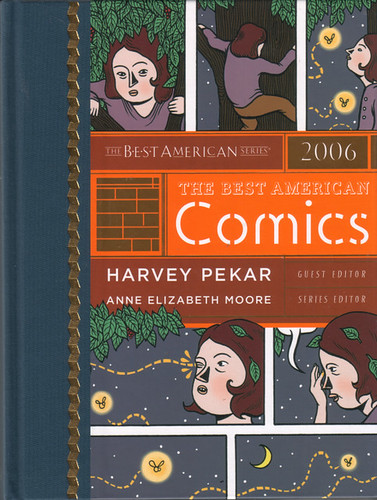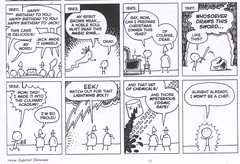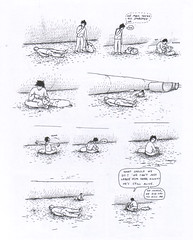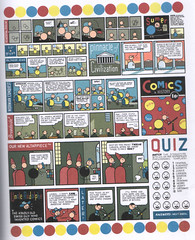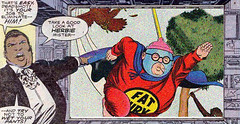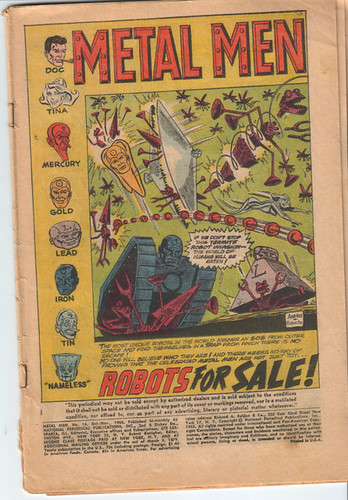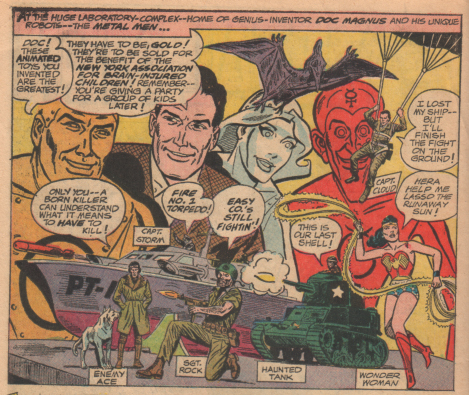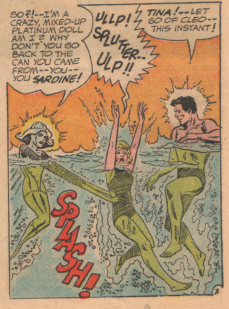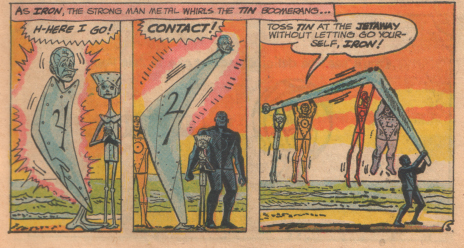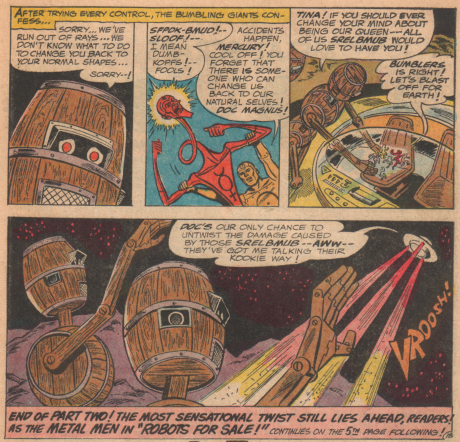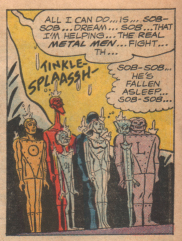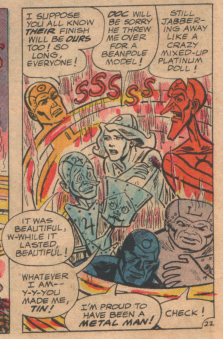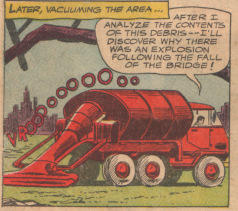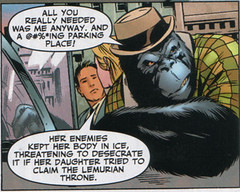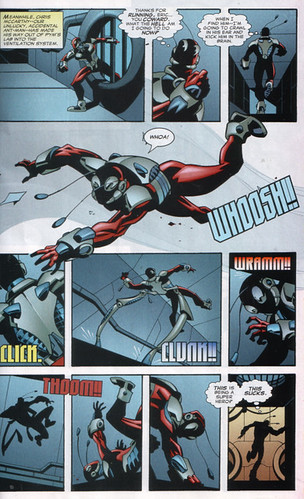Better than a quarter bin: I stopped by the comic book store today, and while I didn't buy anything, I did pick up some singles: the store had a
Free! box right up front, filled with coverless or otherwise incomplete mags. I didn't really look through it, but just grabbed a couple random issues for my partner, a collage artist; then I sighted some Andru-Esposito art in the stack and fished out a tattered copy of
Metal Men #16 from 1965. Here, as objectively as I can relate it, is the story this issue contains.
PART ONEThe Metal Men and Doc Magnus are looking at animated toys that Doc has invented: talking, moving action figures of Capt. Storm, Enemy Ace, Sgt. Rock, The Haunted Tank, Capt. Cloud, and Wonder Woman. (one panel)
“Later that afternoon,” the group is entertaining at a picnic for brain-injured children. (one panel)
“Later,” Gold and Tina observe Doc taking his girlfriend Cleo out dancing. Tina gripes about it while Gold thinks it’s reasonable. (one panel)
“On the beach at Fire Island that weekend,” the story starts to take off. The Metal Men are hanging out on the beach while Doc takes Cleo put into open water so they can neck in private. (He takes his robots on a date with him?). A jealous Tina confronts them and attempts to drown Cleo.
Doc speaks harshly to her and she
zzzzinnggs off crying. Doc is worried about how he hurt Tina’s feelings, which really pisses Cleo off (this seems sort of reasonable, considering she was just nearly drowned and all). Tina has headed back to the beach and flies off in the Jetaway (the flying platform thing the MM cruised around in) all huffy and stuff. The gang forms a boomerang and hurl themselves after her, catching her at what looks to be about a third of the way to the moon. (three and a half pages)
“Suddenly,” the gang pick us an SOS on their
IGU. (WTF? There's no note explaining what this is.). They can't quite make contact with the sending party, so Tina and Gold form a giant antenna until the robots are hit by a beam that shrinks all of them down to toy size (ah, so that first panel was foreshadowing, not just nutty randomness). Gold forms into a stack of coins (?!) so the robots can reach the Jetaway controls; they talk to aliens Loof and Fpok-Bmud (read them backwards), who were actually trying to hit them with a homing beam. The toy-sized Metal Men fly to the aliens’ planetoid, only to be attacked by toy-sized rockets as they approach; they get knocked around pretty good. (five pages)
Then the comic is missing four pages and I can't even being to imagine what happens, because the story picks up
“As the robot termites depart…” and the aliens, who look like robots made out of wooden barrels, are thanking the Metal Men, who are still little. Loof and Fpok-Bmud, whose primary characteristic is that they are incredibly stupid and know it, try to enlarge the Metal Men but only manage to twist them into pretzel shapes. They give up, dump the robots back into the Jetaway and wave a happy goodbye as the team heads back to Doc for help, now little
and twisted. (two and a half pages, end part one)
PART TWOBack in their headquarters, the robots decide to fix themselves with some machine. They get untwisted, but remain small and wind up paralyzed as well. Almost immediately, some uniformed security officers (?) come and take them away to the charity bazaar for the New York Association of Brain-Injured Children (aha!), thinking they are toys like Sgt. Rock
et al. They don't sell (because they don't talk or move like the others) until a blind kid takes them at the very end of the auction. (two pages)
“That night,” the Little Blind Boy (he never gets a name) hears a radio broadcast that robot termites have eaten the Skytop Bridge. This affects him so greatly that he cries a whole lot, but not so much that he doesn't fall asleep in the middle of crying. Good thing, too: the saline content of the boy’s tears has de-paralyzed the Metal Men, and returned them to normal size!
They form a kind of helicopter-thing and head to what remains of the bridge. They’re having a hard time smooshing the robo-termites, so Gold turns into a heating coil and makes Mercury explode, blowing up the termites, the remains of the bridge, and the rest of the Metal Men. (two pages)
“Later,” Doc vacuums up the area, apparently on some sort of pre-FEMA general disaster investigation duty, and is surprised to find the remains of the Metal Men mised in with the schmutz.
Doc reconstitutes them, and Tina nags him into making some Metal Men toys and bringing them to Little Blind Boy, and everyone has a good smile at the end, except Iron, whose face is obscured by a word balloon. (six panels, the end)
Let’s review, shall we?
--Kanigher’s editorial line-up appearing as toys.
--The New York Association for Brain-Injured Children, which actually existed and was an early support system for LD kids. (Not so much for blind kids, though.)
--Doc out of his checkered coat (and most of the rest of his clothes!).
--“Toss Tin at the the Jetaway without letting go yourself, Iron!”
--Moronic but good-natured barrel-robot aliens.
--Robot termites.
--The MM sacrifing their "lives" for humanity (again).
--Doc Magnus has his own street sweeper.
God bless Bob Kanigher. God bless America. God bless us, every one!
PS: I always thought Tina was hot.
